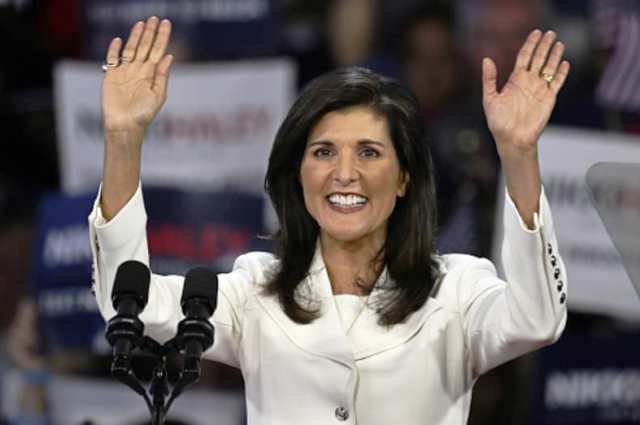US Republican Party, Grand Old Party (GOP) Presidential candidate Nikki Haley has said that if voted to power, she will cut every cent in foreign aid for countries that hate the US. This includes China, Pakistan and other adversaries as “a strong America doesn’t pay off the bad guys”.
“I will cut every cent in foreign aid for countries that hate us. A strong America doesn’t pay off the bad guys. A proud America doesn’t waste our people’s hard-earned money. And the only leaders who deserve our trust are those who stand up to our enemies and stand beside our friends,” Haley, the Former Governor of South Carolina and former US ambassador to the UN, wrote in an op-ed for New York Post.
According to Haley, America spent USD 46 billion on foreign aid last year. That’s more than any other country by far. Taxpayers deserve to know where that money is going and what it’s doing. They will be shocked to find that much of it goes to fund anti-American countries and causes.
Nikki Haley formally launched her 2024 campaign for the White House on February 15 (local time), pitching herself to voters as part of a “new generation” of Republican leaders who can win at the ballot box.
Haley is now the first Indian American woman from the Republican Party to run for the presidential bid. As the former governor of South Carolina and US ambassador to the United Nations, took the stage, Haley introduced herself as the proud daughter of Indian immigrants pitching a new future for the Republican party.
Haley in the Op-ed, while citing examples said that the US has given Iran more than USD 2 billion over the last few years, even though its government is getting closer to the murderous thugs in Iran who shout “Death to America!” and launch attacks on our troops.
“The Biden administration resumed military aid to Pakistan, though it’s home to at least a dozen terrorist organizations and its government is deeply in hock to China. Team Biden restored half a billion dollars to a corrupt United Nations agency that’s supposed to help the Palestinian people but in fact covers for deeply anti-Semitic propaganda against our ally Israel,” she said.
The US has given hundreds of millions of dollars to Zimbabwe, a country with one of the most anti-American voting records in the UN.
American taxpayers still give money to Communist China for ridiculous environmental programs, despite the obvious threat China poses to Americans. We give money to Belarus, which is Russian dictator Vladimir Putin’s closest ally. We even give money to Communist Cuba — a country our own government has designated as a state sponsor of terrorism, Haley stated in her Op-ed for the New York Post.
“This is not just Joe Biden. It’s been happening for decades under presidents of both parties. Our foreign-aid policies are stuck in the past. They typically operate on autopilot, with no consideration for the conduct of the countries that receive our aid. It will take a determined president to root out these taxpayer rip-offs.”
Haley said she is running for the president’s post to restore US’s strength, national pride, people’s trust. Backing American allies and friends like Israel and Ukraine is smart. Sending our tax dollars to enemies isn’t.
“I will be that president, just as I was that ambassador,” Haley wrote.
“As ambassador, I strongly supported President Donald Trump’s decision to cut nearly USD 2 billion of military aid to Pakistan because that country supports terrorists who kill American troops. It was a major victory for our troops, our taxpayers and our vital interests, but it didn’t go nearly far enough. We’ve still given them way too much in other aid. As president, I will block every penny,” the US presidential candidate further wrote.
With the aim of moving from the “stale ideas and faded ideas” of the past, the Indian American leader Nikki Haley on February 15 (Wednesday) announced her candidacy for the 2024 Republican Presidential nomination.
After Republican leader Nikki Haley, another Indian-American, healthcare and tech sector entrepreneur Vivek Ramaswamy on Wednesday (local time) announced his 2024 US presidential election bid.
“We’ve celebrated our “diversity” so much that we forgot all the ways we’re really the same as Americans, bound by ideals that united a divided, headstrong group of people 250 years ago. I believe deep in my bones those ideals still exist. I’m running for President to revive them,” tweeted Ramaswamy in a video announcing his intention to run for president. (ANI)
Read More:http://13.232.95.176/

